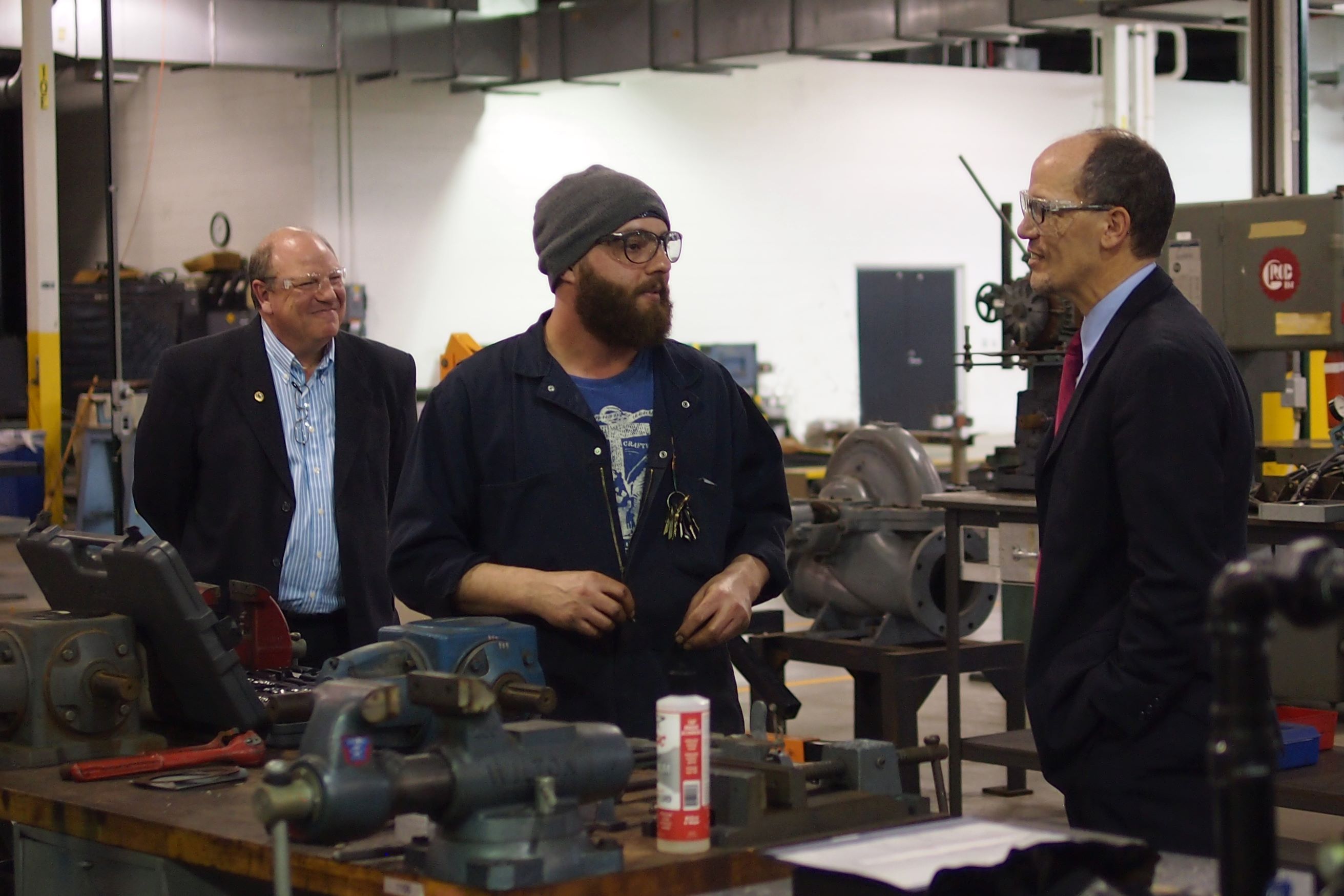
Analysis
There are many factors to consider when applying to the H-1B Ready to Work program. First and foremost, it is helpful to understand that the funding for this program is generated by the H-1B Visa fees that employers pay to hire foreign workers. Thus, one of the clear goals of the program is to train American workers to fill these highly skilled and technical occupations. This requires more thought than simply picking one of the occupations noted in Appendix A of the grant guidance document, as you should be able to provide local and regional data to document that these positions are being hired out to foreign workers in your targeted service area.
A new factor to consider this year is the "Ready to Work" component of the program. In the past, the target audience was wide-open as long as you were training American workers. This iteration of the program requires a focus on the long-term unemployed (85% of funding targeted towards this group). Furthermore, in an effort to connect the dots between the provision of training and the hiring of participants, applicants must include at least 3 regional employers in their coalition. These employers must have a true connection to the project in that they ultimately hire for the occupations being targeted in the proposal.
One final item to consider is the inclusion of technology and equipment into the funding proposal under the H-1B Ready to Work program. The Employment and Training Administration (ETA) will apply a high level of scrutiny to such requests, requiring appropriate and extensive justification. However, considering the focus this year on the long-term unemployed, one could imagine the importance of online, web-based and distance learning methodologies for a target audience that is likely to consist of non-traditional students that have familial and other adult obligations. Furthermore, the involvement of local employers and the importance of on-the-job training and immersion experiences also lends itself to the inclusion of technology to connect instructors, students and the business community. While most folks will front-load any equipment needs to be available throughout the project, it is worth noting that the ETA generally does not support equipment requests in the final year of a project period.
More Details on the Opportunity
This grant program is designed to provide long-term unemployed workers with individualized counseling, training and supportive and specialized services leading to rapid employment in occupations and industries for which employers use H-1B visas to hire foreign workers. A small percentage of other unemployed and/or incumbent workers may also be served through this program. H-1B grants are financed by a user fee paid by employers to bring foreign workers into the United States under the H-1B nonimmigrant visa program.
The primary objective of this program is to fund partnerships that can effectively recruit and serve long-term unemployed workers and that are built around a comprehensive, up-front assessment resulting in customized interventions across three tracks:
- Intensive coaching and other short-term, specialized services culminating in direct job placement into middle and high-skilled jobs
- Short-term training leading to employment
- Accelerated skills training along a career pathway that leads to an industry-recognized credential and employment.
Within these tracks, we are especially interested in programs that include employer-based activities with an earnings component, such as on-the-job training, and other paid work experience, as well as specialized participant services that address the unique barriers facing long-term unemployed workers, such as financial counseling and behavioral health counseling.
Funded programs will include tangible commitments from employers and other partners to provide employment opportunities, technical skills training, and on-the-job experience and other paid work experience for H-1B occupations, while also addressing the barriers, income needs, and support needs unique to long-term unemployed workers. As a pre-condition to be considered for Ready to Work funding, all applicants must have at least three employers or a regional industry association with at least three employers actively engaged in the project.
To meet the legislative intent of positioning American workers to reduce the need for foreign workers under the H-1B visa program, applicants must design their programs to support industries and occupations in demand in their regional economy(ies) and for which employers are using H–1B visas to hire foreign workers. According to recent data, a wide range of industries may meet these criteria in local and regional areas around the country. Ready to Work grants under this SGA will focus on high-growth industries and occupations defined as those that:
- Are projected to add substantial numbers of new jobs to the economy
- Are being transformed by technology and innovation requiring new skill sets for workers
- Are new and emerging businesses that are projected to grow or
- Have a significant impact on the economy overall or on the growth of other industries and occupations
A list of qualifying H-1B occupations is available at http://www.h1base.com/content/h1boccupations
Eligibility
Grants will be awarded to the lead applicant of a public and private partnership of entities that includes:
- The workforce investment system
- Training providers, such as community colleges and community-based and faith-based organizations
- Business and business-related groups, trade associations, nonprofit business or industry, and organizations functioning as workforce intermediaries for the expressed purpose of serving the needs of businesses
As a pre-condition to be considered for Ready to Work funding, there must be at least three employers or a regional industry association consisting of at least three employers who are actively engaged in the project. Additional partners that reflect the character and resources of the local or regional economy and the community are strongly encouraged.
Award Information
Approximately $150 million will be available for H-1B grants.
For more information, visit: www.grantsoffice.com/GrantDetails.aspx?gid=36242